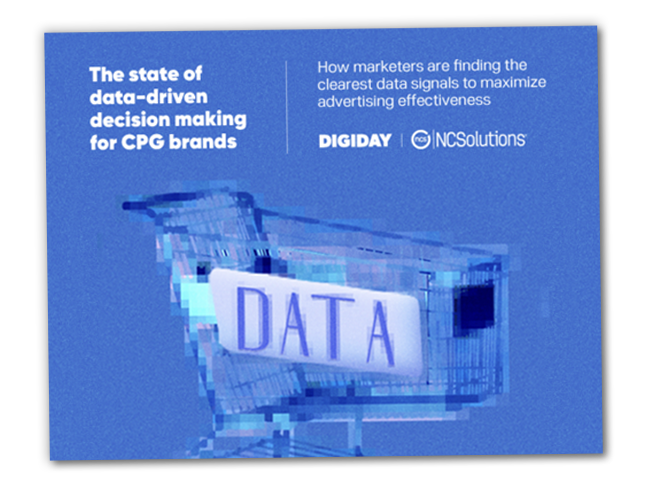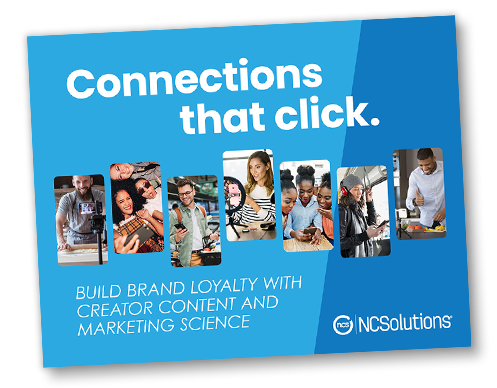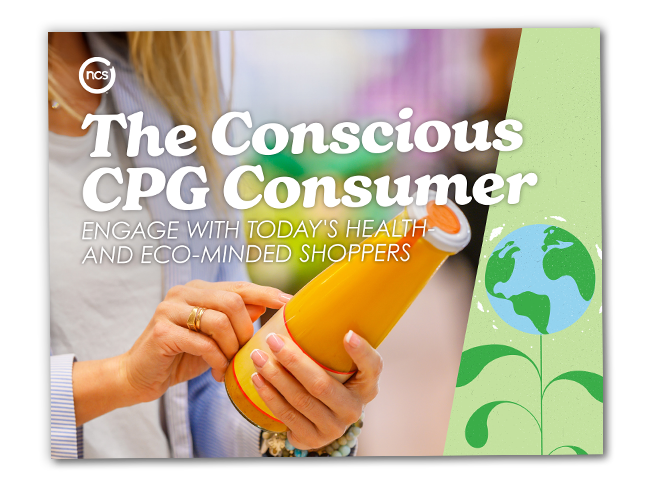Menu
 By NCS Marketing
By NCS Marketing
After a few years of uncertainty - thanks to the pandemic, supply chain issues, and inflationary prices - could consumers really be looking at…a bit of stability?
It’s a reasonable thought. After all, inflation is at target levels, supply chains have mostly normalized, and the COVID pandemic is in the rearview mirror. All of which means consumers have more flexibility about what they add to their shopping carts.
Before we step into the new year, we wanted to know: what’s likely to be on consumer grocery lists in 2025?
Here’s what we expect to be the top trends.
1. Premium, please
Consumers are ready to splurge at the grocery store - but not on just anything. Fifty-nine percent of Americans say they're willing to pay a premium for quality, while 56% say they’re willing to spend more for food that tastes better.1
In addition, 40% say they’re willing to pay a premium for food that offers health benefits, and 37% will pay more for foods that offer nutritional value. More than one in four (27%) will pay more for a brand name.

Some aisles are more attractive than others. Forty percent of Americans say they’ve splurged in the last six months by spending more on meat than they typically would, while 32% have spent more on sweets such as cookies or candy. A similar percentage (31%) of consumers say they spent more for snack foods, and 28% will pay a premium for fruits and vegetables.
Some brands, like Driscoll’s, have picked up on the emerging preferences for premium quality food. The fruit company recently engineered a premium line of berries called the “Sweetest Batch,” making clear this trend is an opportunity for brands to develop and market high-end lines.

Americans aren’t only indulging on grocery items: 38% treated themselves in the last six months by going out to eat, and 36% said they splurged on restaurant delivery or takeout.
It’s notable that these are the top two choices for splurging - more than non-food purchases (30% of respondents), self-care (25%), travel (21%), or events (21%).
Still, almost one in four (23%) said they didn’t treat themselves to any of the options.

With 25% of consumers saying they splurged on self-care, an NCS consumer sentiment survey in August 2024 revealed strong interest in premium self-care products, with half (50%) of Americans willing to pay more for these items. Two-thirds (66%) of Americans in that survey said they had purchased moisturizer in the last three months, while 34% had bought teeth whitener and 31% nail polish.
Keeping themselves healthy was a priority for consumers in the first quarter of 2024. During that period, sales of vitamins, supplements, and nutrition powder rose 7.8%, 8.2%, and 28% compared to the fourth quarter of 2023.2 We predict this trend will continue in the first quarter of 2025.
2. Eco-friendly brands
For both consumers and CPG brands, sustainability is a top priority. Consumers want to buy products that are healthier both for them and the environment, and they are more likely to be loyal to brands that share their values. Many CPG brands include sustainability goals and promises in their advertising, marketing and annual reports, whether it’s developing healthier food and grocery items or focusing on cleaner processes and packaging.
These steps resonate with consumers. Nearly six in 10 Americans (59%) purchased items within the last 30 days specifically to improve their health and well-being, while 27% of consumers have made purchases because the product is good for the environment.3

Brands that prioritize these values in their offerings have a unique opportunity to connect with consumers on a deeper level and build loyalty based on shared principles.
3. Healthier eats
As Americans focus on improving their health, many are swapping the traditional “diet” for an improved “eating lifestyle.” Nearly half (47%) of Americans said they plan to eat more plant-based foods in 2025, while 45% are planning to reduce their dairy consumption and 34% are planning to cut back on their meat consumption.4
The top five eating lifestyles Americans currently follow are:
- Sugar-Free
- Anti-Inflammation
- Dairy-Free
- Gluten-Free
- Flexitarian
Rising interest in these lifestyles will likely increase demand even further for food products that best align with consumers' food and lifestyle goals.

4. Influencer-approved and #trending
Content creators on social platforms like Instagram and TikTok are engaging audiences - especially Gen Z - with their reels, videos, and blog posts. They’re able to build trust among their followers because they’re relatable and authentic. For instance, more than one-third (37%) of Gen Zers say they appreciate when influencers share personal aspects of their lives.5 No wonder content creators are able to sway purchasing decisions!
Creating connections that click with a generation like Gen Z, whose spending power is growing, is a trend likely to stick around well past 2025.
Content creators offer CPG brands an avenue to this emerging audience. An advertiser can drive sales lift by partnering with the right influencer, but they also need to pay attention to other factors - like brand loyalty, creative, and targeting. Leveraging these forces together can build connections with consumers - and ensure they add recommended products to their shopping carts.

5. Buzz-free bevs
The interest in drinking less or not at all continues to grow. In January, for the second year, we asked consumers about their interest in non-alcoholic beverages, and we discovered 41% of all Americans plan to drink less in 2024, up from 34% in 2023.6 Younger consumers are largely driving the movement toward sober curiosity.
- Among Gen Z, 61% said they planned to cut back on their alcohol consumption in 2024, up 53% over 2023.
- Meanwhile, 49% of millennials said they planned to drink less in 2024, an increase of 26% from those surveyed a year before.
- As their interest in being sober grows, there are more non-alcoholic beers, wines and liquors from emerging and top beverage brands in the grocery stores and at restaurants.
As Dr. Sanjay Gupta noted in a CNN segment about the trend, these consumers are making a lifestyle decision to drink less or not at all, but are still purchasing alcoholic drinks even as they buy more non-alcoholic beers, mixers, and liquors. Keep an eye out for our updates on the sober curious movement in early 2025.

To learn more about the latest trends in consumer purchase behavior and advertising, visit The Goods.
1 NCS Consumer Sentiment Survey, October 2024
2 NCSolutions Purchase Data, July 2024
3 NCS Consumer Sentiment Survey, February 2024
4 NCS Consumer Sentiment Survey, September 2024
5 NCS Consumer Sentiment Survey, May 2024
6 NCS Consumer Sentiment Survey, January 2024
Subscribe for Updates
GET INSIDE THE MINDS OF CPG BRAND MARKETERS
Learn about their data-fueled strategies
SNAG YOUR COPY OF THE REPORT TODAY
WONDERING HOW CONSUMERS RESPOND TO INFLUENCER MARKETING?
See how creating content drives results
DOWNLOAD YOUR COPY NOW
WANT TO KNOW MORE ABOUT HEALTH AND ECO-MINDED SHOPPERS?
Get CPG insights to engage your buyers
ACCESS THE E-BOOK TODAY


.png)
.png)

